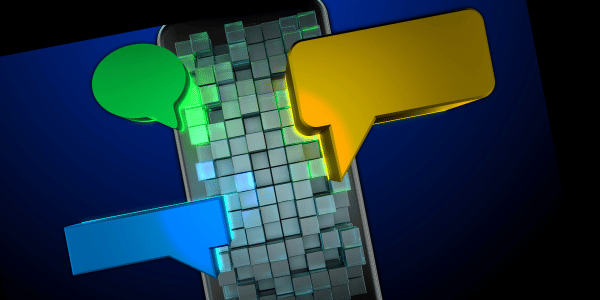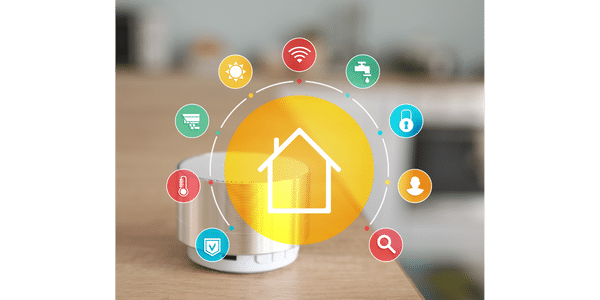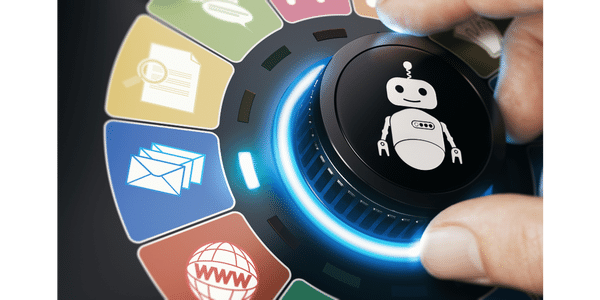Address
304 North Cardinal St.
Dorchester Center, MA 02124
Work Hours
Monday to Friday: 7AM - 7PM
Weekend: 10AM - 5PM
Address
304 North Cardinal St.
Dorchester Center, MA 02124
Work Hours
Monday to Friday: 7AM - 7PM
Weekend: 10AM - 5PM

We are witnessing an unprecedented technological revolution in the 21st century. Amid these advancements, the rise of chatbots holds a distinct position, bringing forth a paradigm shift in how businesses interact with customers. But what exactly does this term mean, and why should it pique your interest? I’m excited to unravel the fascinating world of the six types of chatbots, their evolving roles, and their transformative potential for our future.
Now, you might wonder, are there different types of chatbots? The answer is a resounding yes! They come in a spectrum of forms, from rule-based ones that provide direct responses to predefined queries to more advanced variants that empathize, converse in multiple languages, and comprehend context.
And what about examples of chatbots? Well, you’ve probably interacted with them more often than you realize. Ever used Siri or Alexa? They’re virtual assistants, an advanced type of chatbot that exemplifies the concept of AI in everyday life. Or perhaps you’ve been on a website where a chat window popped up offering assistance – that’s likely a customer service chatbot, either rule-based or powered by artificial intelligence.
These dynamic virtual beings, whether simplifying our shopping experiences or providing 24/7 customer support, signify the amazing benefits of AI. Now, let’s delve into six distinct chatbot types, their current applications, and potential future scenarios.

Often seen as the founding fathers of chatbot technology, rule-based chatbots are beautifully simplistic. These decision-tree structures, bound by predefined rules, associate specific keywords with preset responses, simplifying user interactions to a great extent.
Current Usage
Businesses worldwide employ rule-based systems for their efficiency in handling frequent queries. These bots are perfect for streamlining help desks, answering common questions, and reducing customer service workload. Their speed and accuracy bring about a sense of satisfaction for users, fostering stronger customer relationships.
The Future
As we gaze into the future, rule-based chatbots could evolve to handle more complex tasks. Their rule sets could be expanded and integrated with more sophisticated systems, providing solutions for a wider range of issues. These intuitive bots could become capable of guiding users through detailed processes, from troubleshooting to completing online transactions.

The AI-powered agents represent an exciting leap forward in technology. Harnessing the powers of natural language processing (NLP) and machine learning, these bots can understand and learn from user interactions. With deep learning algorithms in the background honing their response accuracy over time.
Current Usage
These bots are the backbone of many modern customer support teams. Businesses capitalize on their ability to deliver personalized responses, engage users in meaningful conversations, and generate valuable leads. They also assist in collecting customer feedback and analyzing behavior patterns.
The Future
The potential for AI chatbots in the future is mind-boggling. They could become predictive, understanding user behavior patterns so precisely that they anticipate needs before they’re even expressed. They might even be able to handle complex tasks such as legal advice or medical triage, providing accurate information, and directing users to appropriate services.

Virtual assistants represent the epitome of artificial intelligence technology. They provide a human-like conversational experience, understanding natural language, learning from past interactions, and adjusting responses based on learned data. As responses improve, this chatbot type represents a significant leap in automation AI.
Current Usage
Virtual assistants have found a place in many businesses, streamlining internal processes by automating tasks like appointment scheduling and setting reminders. They significantly enhance customer service by providing immediate and personalized responses, often surprising users with their human-like demeanor.
The Future
Imagine a future where virtual assistants are sophisticated enough to conduct meetings or even negotiate business deals! They could fully automate homes, managing everything from temperature regulation to grocery shopping. These assistants could also evolve into personal wellness coaches, offering fitness advice and managing medical appointments.

Contextual chatbots are a breakthrough in the growth of AI, bringing a new dimension to digital conversations. These bots excel in understanding the context of user interactions and remembering past exchanges, leading to more nuanced and satisfying conversations.
Current Usage
Many businesses today employ contextual models, including advanced language models, for product recommendations and personalized marketing campaigns. By retaining information from previous interactions, these bots can offer solutions based on past preferences, significantly boosting user engagement.
The Future
In the future, contextual models could serve as personal lifestyle consultants. They could suggest music, recommend movies, or even propose travel destinations based on our preferences. Imagine a chatbot that knows you so well it can plan your perfect day!

Sentiment analysis bots have introduced a whole new level of understanding in customer service, bringing empathy into the digital realm. By using sentiment detection techniques, these bots can gauge user emotions and tailor their responses accordingly.
Current Usage
Right now, sentiment analysis bots are a game-changer for businesses focused on customer satisfaction. They play a vital role in managing online reputation, effectively handling negative feedback, and fostering positive brand interactions. By identifying and prioritizing critical issues, these bots ensure that urgent matters are addressed swiftly and appropriately.
The Future
Looking ahead, the potential of sentiment analysis is even more exciting. These bots could evolve into virtual therapists, providing emotional support to users in distress. In customer support, they could offer empathetic and calming responses to frustrated or upset users, transforming how businesses interact with their customers on an emotional level.

As businesses expand globally, multilingual chatbots have become essential communication tools. These bots are capable of understanding and responding in multiple languages, making them invaluable for connecting with a diverse global audience.
Current Usage
Digital assistants in multiple languages play a pivotal role in international businesses. They provide support in the user’s native language, fostering inclusivity that enhances brand reputation and builds trust. In today’s globalized market, this capability is not just a luxury—it’s a necessity.
The Future
Looking forward, the potential of multilingual chatbots is immense. These could become the ultimate tools for global communication. Imagine them facilitating diplomatic negotiations or international business meetings, seamlessly translating real-time conversations, and ensuring smooth communication across borders.
As we look at the broader picture, these six types of chatbots are leading a digital revolution in business and customer interaction. They’re not just about providing answers anymore. They understand context. Recognize user emotions and offer personalized experiences. It’s clear that these top chatbot trends will continue to evolve and become more indispensable in our daily lives. Definitely resharing how we connect and do business.
Fast forward to the future, and we see a world where types of AI chatbots are more deeply embedded in our everyday lives. As chatbot benefits become more evident, we will most certainly witness an evolution. They could be negotiating deals, providing emotional support, or offering personalized lifestyle advice. As they continually learn and adapt, they will become even more efficient, empathetic, and multilingual, transforming our interaction with technology.
Interestingly, with advancements in technology, businesses and individuals can now get access to their own AI writing assistant, such as an advanced chatbot type like ChatGPT. With how to get a customized ChatGPT becoming easier and more accessible, the future holds immense promise for individualized and dynamic interactions.
Rev up your business with a custom chatbot.
Connect with our AI guru today.
So these ingenious offspring of artificial intelligence are fundamentally changing the way we communicate and conduct business. Whether you’re a business owner looking to enhance customer experience or a tech enthusiast captivated by the advancements, understanding the different types of chatbots is crucial. They are already improving our lives and businesses in countless ways, and this is just the start.
Here’s to the exhilarating world of digital assistants and the wonders they are yet to unveil. The next time a chatbot greets you on a website or application, pause a moment to marvel at this tech wonder, simplifying our lives one chat at a time.